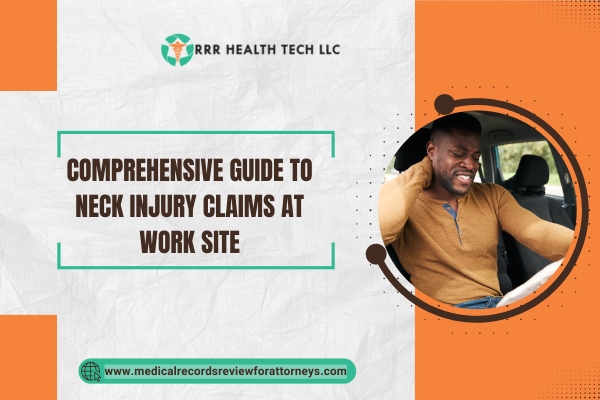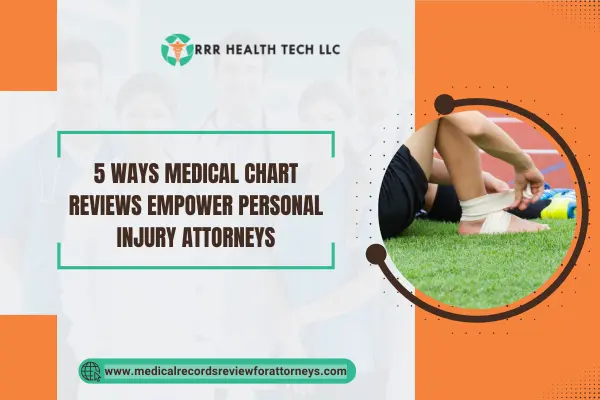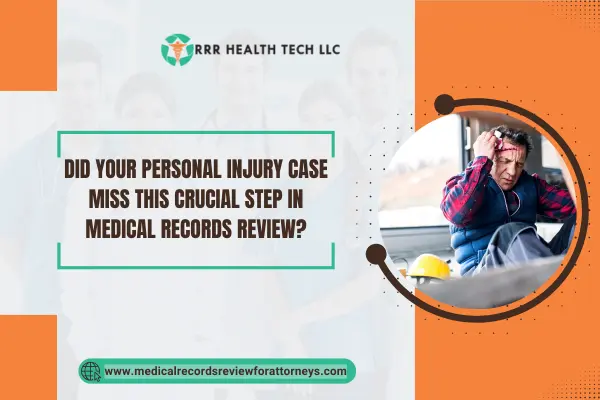
Introduction
The neck areas take a lot of damage in different occupations and that can sometimes seriously impede the functioning of an individual. It is essential for both victims of such incidents and their lawyers to have a good understanding of such neck injuries. This article looks at neck injury in detail, along with the types of medical treatment for such case scenarios and how these medical records review services can aid attorneys in the USA regarding preparation of details regarding neck injuries to help build a strong case for compensation.
Understanding Neck Injuries
Neck injuries can range from minor strains to severe trauma, impacting a worker’s ability to perform daily tasks.
- Types of Neck Injuries:
- Acute Injuries: In the earlier classification of neck injuries the trauma was caused by accidents, now acute injuries refers to trauma caused by sudden incidents such as injuries caused while attempting to avoid a fall or accidents.
- Chronic Injuries: Chronic neck injuries classify within the second category which includes negligence over time, such as muscle overuse to be one of the factors and less than ideal ergonomics to be the other.
Common Causes of Neck Injuries at Work
Neck injuries can occur in various work environments. Here are some common causes:
- Repetitive Motions: Other examples can include lifting heavy weights incorrectly which rotates the neck causing an acute injury as mentioned earlier.
- Chronic Pain: The inability of workstation setups to be ideal can result over time, which in turn causes a significant amount of strain on the neck over time.
- Neck Strain: Tasks which require regular neck movements can result in the necks getting strained as mentioned earlier.
- Severe Neck Injuries: Some events such as tripping or other forms of accidents can create tension on the neck extreme enough to immobilize it.
Symptoms and Diagnosis of Neck Injuries
Recognizing the symptoms of a neck injury is crucial for timely treatment. Common symptoms include:
- Aches and Stiffness – The first signs of a neck injury.
- Loss of Motion – Inability to rotate the head or move the neck.
- Nerve Signs – Pins and Needles, numbness, or weakness in arms or hand.
Diagnosis Process
- Past Health Records – In determination of the injury, in what way it occurred is of much significance.
- Clinical Examination – The examiner performs a clinical examination to assess the neck range of motion and tenderness.
- Imaging Examination – X-ray, MRI, or CT scans are performed for the assessment of structural deformities.
Treatment Options for Neck Injuries
Treatment for neck injuries varies based on severity and type. Common approaches include:
- Rest and Changing Activities – Important for healing to occur.
- Physiotherapy: Effective in regaining the strength in muscles and flexibility.
- Drugs: Pain-killers and anti-inflammatory drugs used to alleviate symptoms.
- Surgical Intervention: Surgical treatment when indicated is traumatizing.
The Role of Medical Records Review in Workers’ Compensation Cases
Medical records review is a critical service for attorneys handling workers’ compensation claims. Here’s how it helps:
- Comprehensive Documentation: Ensures all medical treatments and evaluations are accurately recorded.
- Identifying Gaps: Helps attorneys identify missing information that could strengthen a case.
- Expert Testimony Preparation: Assists in preparing expert witnesses by providing detailed medical histories.
Why Attorneys Need Medical Records Review
- Completeness: Assures and guarantees that all medical records have all the information needed without any errors.
- Time Saving: Organizes and summarizes the medical information so that it is time efficient.
- Providing Justification: Enhancing claims provides the justification and the extent of injuries and the treatment taken to claim so.
Case Studies
Case Study 1: Overview of a Construction Worker’s Neck Injury
- Overview: A construction worker sustained a neck injury due to a fall from the scaffold.
- Problem: In this context the worker suffered pain and lack of mobility which prevented him not to work.
- Solution: In this case physical therapy and pain controlling muscle relaxants, comprehensive steps based and taking considerable amounts of time were able to solve the issues.
- Compensation: In this case, the construction worker was able to receive a large compensation through compensation due to accurate and medical record reviews.
Case Study 2: Office Worker with Chronic Neck Pain
- Overview: Office workers engage in boring desk jobs where dynamics is almost zero which can lead to chronic pain in the neck region.
- Problem: Other than chronic pain, the neck did not have a full range of movement, which made it difficult for the worker to perform daily tasks requiring reaching, lifting and even turning the head.
- Solution: As in Case Study one, the treatment encompassed, ergonomic modification, physical therapy and in certain cases medication.
- Compensation: In this case, the workers adjunct made use of medical records review to show the connection that exists between the work environment and the injury, the case ended in settlement.
Conclusion
Work-related neck injuries may affect the quality of an individual’s life as well as their career immensely. Familiarity with medical treatment and the process of medical records review may be of great help to the attorneys during workers compensation disputes. It is possible for attorneys and other legal representatives to assist in the compensation of their clients by improving their documentation and resolving the issues of neck injuries.


